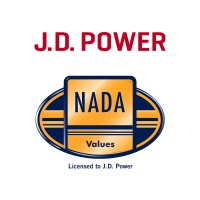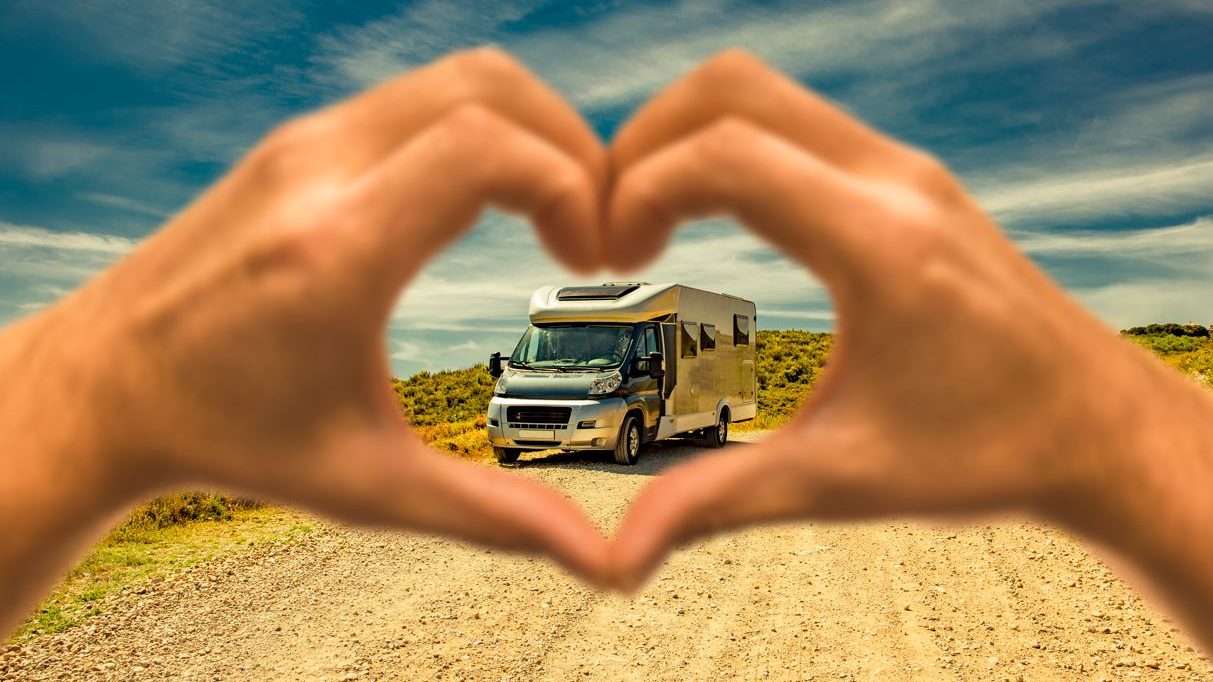
You love your camper! It’s provided your family with several years of amazing memories. It’s in great shape, but it’s time to trade it in for a new RV.
You get to the dealer, ready to trade—and they quote you a price for your RV that’s thousands of dollars less than what you expected.
Say what?!?
You paid a lot of money for your camper. You deserve the most value for your trade-in.
Knowing the factors that affect the value of your camper and the actions you can take before bringing it in for a trade-in appraisal will help you get the most value for your RV.
Getting The Most For Your RV Trade
We love trade-ins at Bish’s RV. We know your gently used camper is the perfect match for someone looking to find a great pre-owned RV.
However, market conditions and economic uncertainty can make trading in your RV a frustrating experience.
We have over 30 years of experience selling RVs in every market condition. We know how to help people get the most value for their camper trade-ins.
This article will explain the factors that affect the value of your RV and tell you a few simple things you can do so you can get the most value for your trade. (Even if you don’t trade it in with us!)
Are you Ready to Trade Right Now? See What Your RV is Worth!
Table of Contents
- How do RV Dealers Determine the Value of My Trade
- How Market Conditions Affect My Trade Value
- What is the NADA Appraisal Guide
- The Difference Between Wholesale Value and Retail Value
- How do I Determine My RVs Trade-in Value
- How the Condition of My RV Affects Its Value
- How to Get the Most for My RV Trade
- I’m ready to Trade-in in my RV
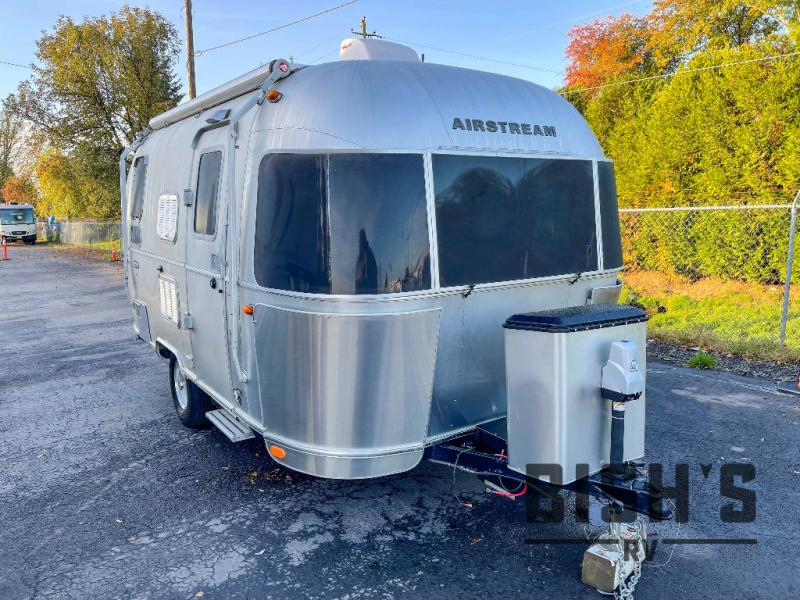
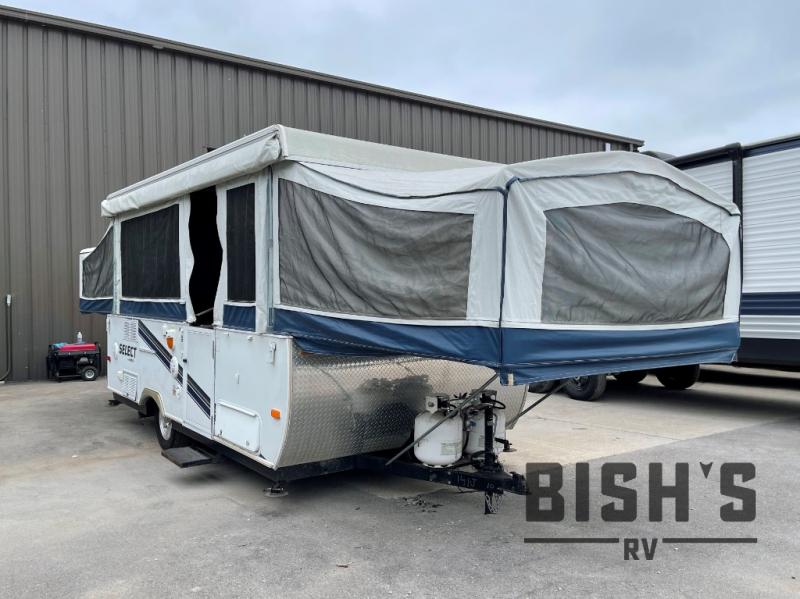
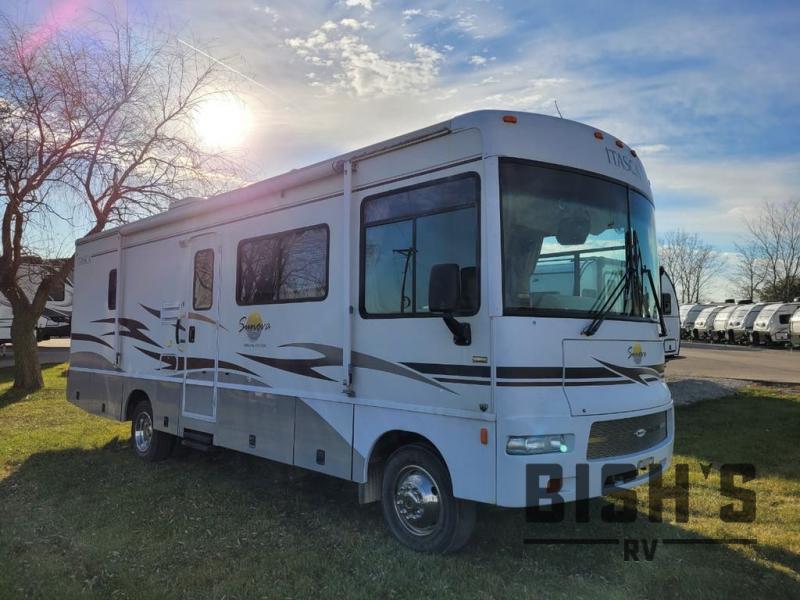
How do RV Dealers Determine the Trade Value of My Camper?
When you bring an RV into a dealership for a trade, THREE FACTORS help determine the trade-in value you will get for your camper.
- Current Market Conditions
- NADA Appraisal Guide Value
- Condition of Your RV
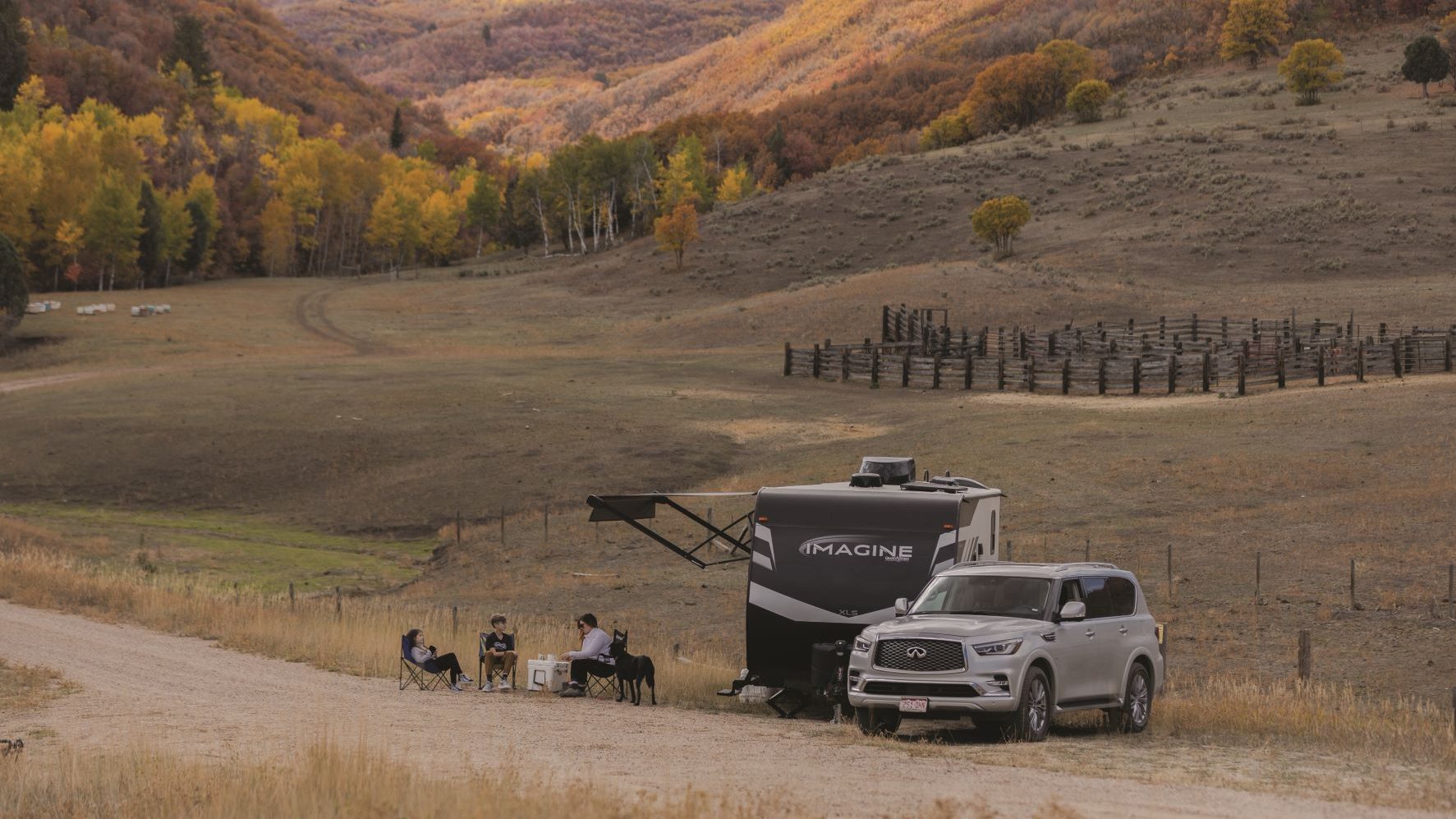
How Market Conditions Affect My Trade Value
Market conditions are the greatest contributing factors that impact the value of your RV trade-in.
When the demand for RVs is high, dealerships may be more willing to pay more to acquire inventory to meet demand.
On the other hand, when the demand for RVs is low, the value of your trade-in may be lower, as dealerships have fewer customers coming in to buy campers.
A lower value, in this case, does not mean the quality of your RV is any less.
It just means that when fewer people are buying RVs and dealerships have sales lots full of campers, the value of RVs goes down because there are significantly more RVs for sale than there are people wanting to buy RVs.
Supply and Demand
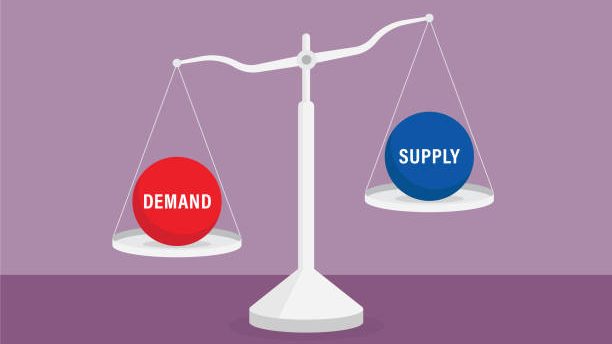
As an example of how market conditions affect RV values, demand was very high shortly after the pandemic in 2020. Trade-in values rose dramatically to meet the demand as dealers needed more inventory.
After a couple of years, the supply of RVs increased and demand normalized mid-2022, so trade-in values dropped.
During times of economic uncertainty, such as a recession, dealerships may be more cautious about acquiring inventory and may offer lower trade-in values as a result.
The condition of your RV also affects trade-in value; however, market conditions are what most influence how much dealerships are willing to pay for an RV in good condition.
For example, if there is a high demand for larger, luxury RVs, dealerships may be willing to pay a premium for these types of units, even if they are not in pristine condition.
It’s always a good idea to do some research on current market conditions to get an idea of how these economic factors may affect the value of your trade.
What is the NADA Appraisal Guide?
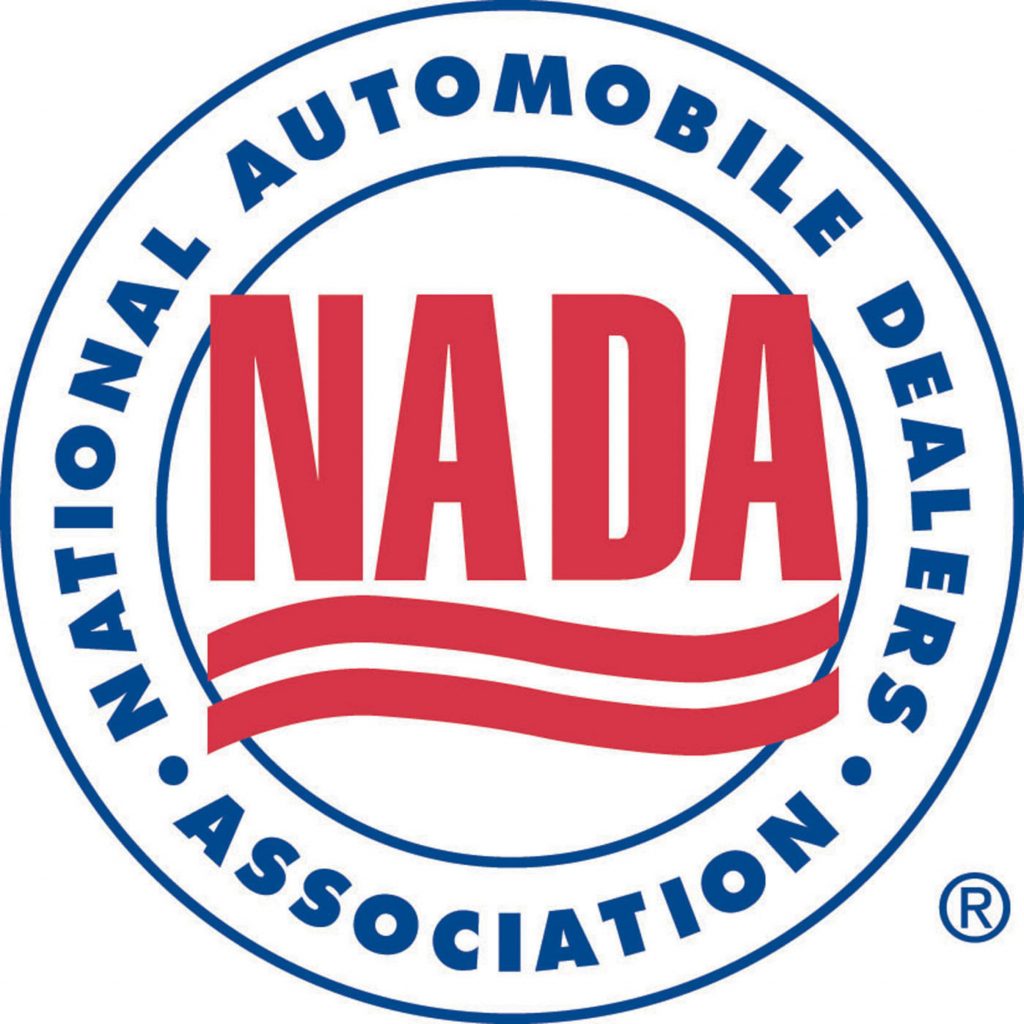
When you bring your RV into a dealership for a trade-in, the first thing the dealer is going to do is look up the RV’s value in the NADA Appraisal Guide.
NADA stands for National Automobile Dealers Association.
Only dealers in the automotive industry are able to join NADA. Being a NADA member gives dealers access to the NADA Appraisal Guide and allows them to use the guide to see what your RV is worth.
The NADA Appraisal Guide uses several factors to determine the value of RVs, including:
- Market Conditions
- Year/Make/Model
- Mileage (For motorhomes and vans)
- Standard Features
- Location
The most important thing to know is: the trade-in value of your RV is based on its wholesale value, not its retail value.
The wholesale value of your RV is generally determined by its auction value and its insurance value. NADA looks at these values, as well as current market conditions, and assigns a trade-in value accordingly.
Options and Upgrades DO NOT factor into an RV’s NADA Wholesale Value
It’s important to understand that the NADA Appraisal Guide does not add any cash value to an RV’s wholesale value for any of the additional upgrades or add-ons your RV may have.
The NADA Guide doesn’t add additional value for these upgrades because banks and insurance companies do not take these add-ons into consideration when determining your RV’s cash value.
As a result, if someone wants to buy your RV after you’ve traded it in, the buyer can only be financed by a lender based on the RV’s value determined by the banks—a value not improved by optional upgrades.
It’s also important to understand how a camper’s wholesale value affects its RV insurance value.
If insurance companies have to pay out any claims on the RV if it is damaged or stolen, they will only cover payments up to the RV’s wholesale value. Optional upgrades do not factor into an RV insurance claim payment.
The Difference Between Wholesale Value and Retail Value
- Wholesale Value is the price at which RVs are sold by wholesale dealers to RV dealerships
- Retail Value is the price at which RVs are sold to consumers by RV dealerships.

Why are RV Trade-in Values Less Than Retail Pricing?
It is important to note that RV dealers acquire used RVs on an “as-is” basis—meaning that they have no recourse if the unit is damaged or broken.
RV dealers, as a result, usually end up spending quite a bit of money repairing and cleaning used RVs before listing them for sale, whether they’re acquired through trades or at an auction.
Even RVs in “good” condition usually must have their tires and wheel bearings replaced, plus the hours of labor cleaning and detailing them to be retail-ready.
In most cases, a dealer will usually spend at least $2,000 to $5,000 on each auction unit and trade-in due to the parts and labor needed to get it up to retail sale condition.
It’s also important to keep in mind, RV dealerships are in the business of putting buyers and sellers together. Normally, the sellers are manufacturers, but we want to help you sell your RV too!
As a dealership, we are going to be hard at work finding the right buyer to enjoy your trailer, and the price difference between wholesale and retail represents that hard work.
How Do I Determine My Trade-in Value
As discussed above, the NADA Appraisal Guide helps dealers determine the wholesale value of your camper.
The bad news is: only dealers have access to the NADA appraisal guide. You, as an RV owner, do not have access to the NADA wholesale value information.
This gives RV dealers a certain level of control over the final value they are able to offer you for your trade, so they can also factor in things like your RV’s condition and their specific dealer inventory needs.
In some cases, not-so-honest RV dealers are able to use this control of information to offer you less for your trade than what it’s worth.
But we have some GOOD NEWS!
Bish’s RV knows of a free way you can get an approximate estimate of what your camper’s trade value may be before you go to a dealer to trade.
It can’t possibly account for 100% of the circumstances driving the trade-in values you may be offered, but it will help you get in the right ballpark so you can have a greater understanding of your RV’s actual worth!
J. D. Power Guide
There is a consumer-facing NADA Guide that is available online for free, called the J. D. Power Guide.
This guide does not provide an actual dealer trade value for your RV. It only provides retail values. Retail values are different from the wholesale values used by RV dealers to determine trade-in values.
If you want to get a “ballpark” estimate of what the trade-in value for your RV might be, you can:
- Go to J. D. Power Guide
- Select your RV year/make/model
- Do NOT select any added options your RV may have.
As mentioned earlier, NADA’s wholesale values do not factor in any optional upgrades or add-ons your camper may have. Banks and insurance companies do not take these add-ons into consideration when determining your RV’s value, so unfortunately, upgrades do not add cash value to your RV’s wholesale value. - Click “Get Base Pricing” button.
You will see several retail value options listed for your RV. Take note of the “low retail value.” The trade-in value of your RV will most likely be 10% – 20% less than its low retail value.
Why is my RV Trade Value 10%-20% Less Than its Low Retail Value?
As we explained earlier in this article, the NADA Appraisal Guide gives dealers up-to-date wholesale values for used RVs.
Your RV’s trade value is most likely 10%-20% less than its low retail value because its trade value is based on the NADA wholesale value and its current condition.
In addition to its wholesale value, RV dealers will factor in the money they will need to spend cleaning and refurbishing your RV to get it retail-ready.
Since RV dealers are in the business of finding the right buyer for each trade-in, RV dealers generally aren’t able to value an RV over its NADA wholesale value.
Is 10%-20% Less Than Low Retail Value an Accurate Number for my RV’s Trade Value?
Please keep in mind, this is only a very broad estimate to help you get an approximate idea of your RVs possible trade-in value.
We believe using the J. D. Power Guide can give consumers a somewhat close approximation of their RVs’ trade-in values; however, there are too many variables that can affect the value of your trade for this to be considered a fool-proof appraisal tool.
The actual trade-in value listed in the NADA Appraisal Guide could be significantly different.
It’s also important to remember that the NADA Appraisal Guide’s trade-in value is only one of the factors that affect the value of your trade-in. Another big factor that greatly affects your RVs trade value is its condition.
Josh the RV Nerd tells you How to know what a Used RV is Worth. Check it out!
How the Condition of My RV Affects Its Value
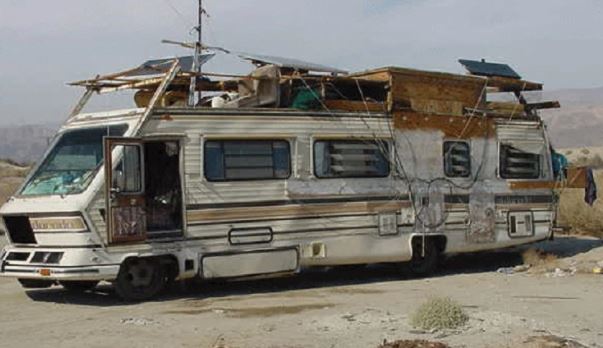
The condition of your RV has a HUGE impact on how much you will get when you trade it in. The better condition your RV is in, the higher the value you can expect to get for your trade.
It’s important to note, no matter how great the condition of your RV is, dealers will rarely be able to value your trade above its wholesale value.
When dealers inspect your RV’s condition, they will typically check:
- How clean it is
- General wear and tear
- Is anything broken
- Is it properly sealed
- Is there any water damage
Clean Your RV!
The best thing you can do to ensure you get the most value for your trade-in is to clean it before bringing it in. Remember, you’re bringing in your RV for a trade-in so it can be sold to someone else.
No one is going to want to buy a dirty RV. If you don’t clean it, the dealer will have to and that costs them money—typically around $200 per hour of cleaning.
Clean the inside and the outside. Make sure there are no visible stains or signs of mold or mildew. A small investment in cleaning supplies and a few hours of cleaning could mean more value for your trade.

If it’s Broken, Fix it!
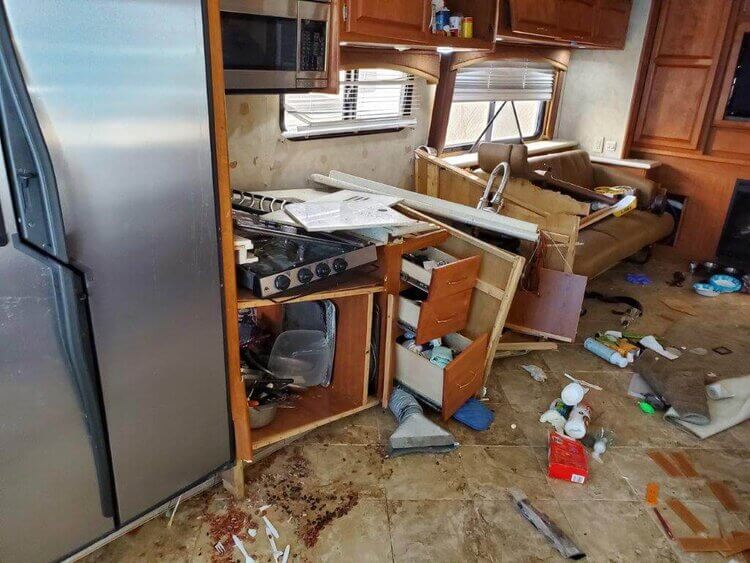
Dealers can’t sell a broken RV. If your RV has anything that is broken, get it fixed before bringing it in for a trade. If you don’t fix problems, the dealer will have to, and they will take the repair costs off the value of your trade.
Think about it—would you buy an RV with broken parts?
It’s rare for a dealer to get a trade-in and not have to replace or repair any parts.
Inspect the Seals
Your RV’s seals are what keep its insides safe from water damage. Thoroughly inspect all the seals to ensure they are intact, including window seals.
If your visual and touch inspections find any gaps, cracks, or feel soft to the touch, be sure to repair the damaged seal before bringing it in. Water damage is very expensive to fix.
Resealing an RV is one of the most common repairs dealers have to make on trade-ins. Making sure the seals are intact in your RV will prevent water damage and help you get the most value for your trade.
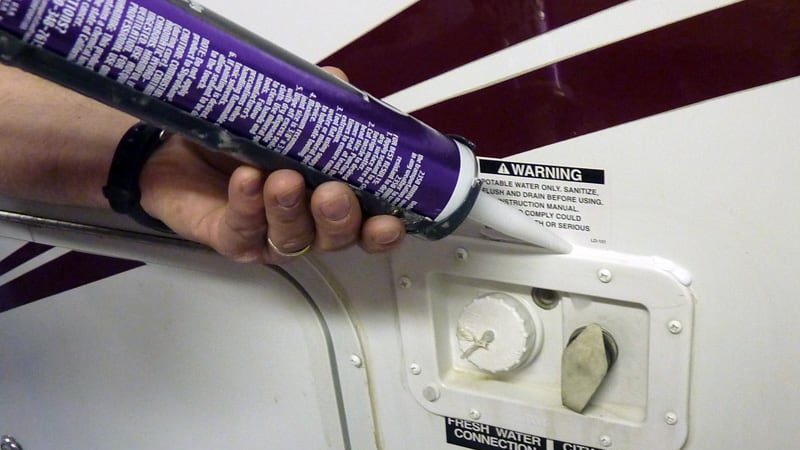
Your Trade-in is Someone Else’s New RV
When you trade in your RV, dealers must then get your RV ready to sell to someone else. This means making sure it’s as clean as possible—both inside and out. It also means making sure everything works and it’s properly sealed.
As noted earlier, RV dealers typically end up spending at least $2,000 to $5,000 on cleaning and repairs to get a trade-in ready for retail sale.
How to Get the Most for My RV Trade
- Clean it
- Clean it
- Clean it
Cleaning your RV is probably the BEST thing you can do to help you get the most value for your trade-in. You may not have control over NADA Appraisal Guide values or market conditions, but you do have control over the condition of your RV.
Invest in cleaning supplies. Take the time to clean it thoroughly. Cleaning your RV before bringing it in for a trade-in could be the difference between thousands of dollars in value.
- Repair any Broken Parts:
From minor repairs like broken cabinets and drawers to major repairs like water heaters and air conditioning, fixing what is broken in your RV before you take it in for a trade-in will help you get the most value for it. If you don’t fix it, the dealer will have to. They will deduct the cost of any repairs that need to be done from your trade-in value.
- Inspect the Seals:
Check the caulking seals of your RV, including the window seals. Reseal any gaps, cracks or seals that are soft and noticeably damaged. Bad seals will greatly reduce the value of your trade-ins - Annual Inspections:
You may not be planning on trading in your RV now, but you may want to in the future. We recommend you have a professional RV tech inspect your RV at least once a year.
These inspections will look at all the major components of your RV including electrical, propane, frame, plumbing, tires, electronics, appliances, and condition of windows, doors, paint, axles, leveling, and seals.
Some dealers, like Bish’s RV, offer free annual inspections for the lifetime of your RV as a benefit for doing business with them.
These free inspections not only save you money, but they also ensure your RV is kept in the best condition possible, so if you ever want to trade it in, you know what needs to be fixed.
Learn more about Bish’s Diamond Club and Free Inspections for the Lifetime of your RV
- Shop Around:
Don’t be afraid to shop around at different dealerships to find the best deal. Getting multiple offers can help you negotiate a better price for your RV.
I’m Ready to Trade-in my RV
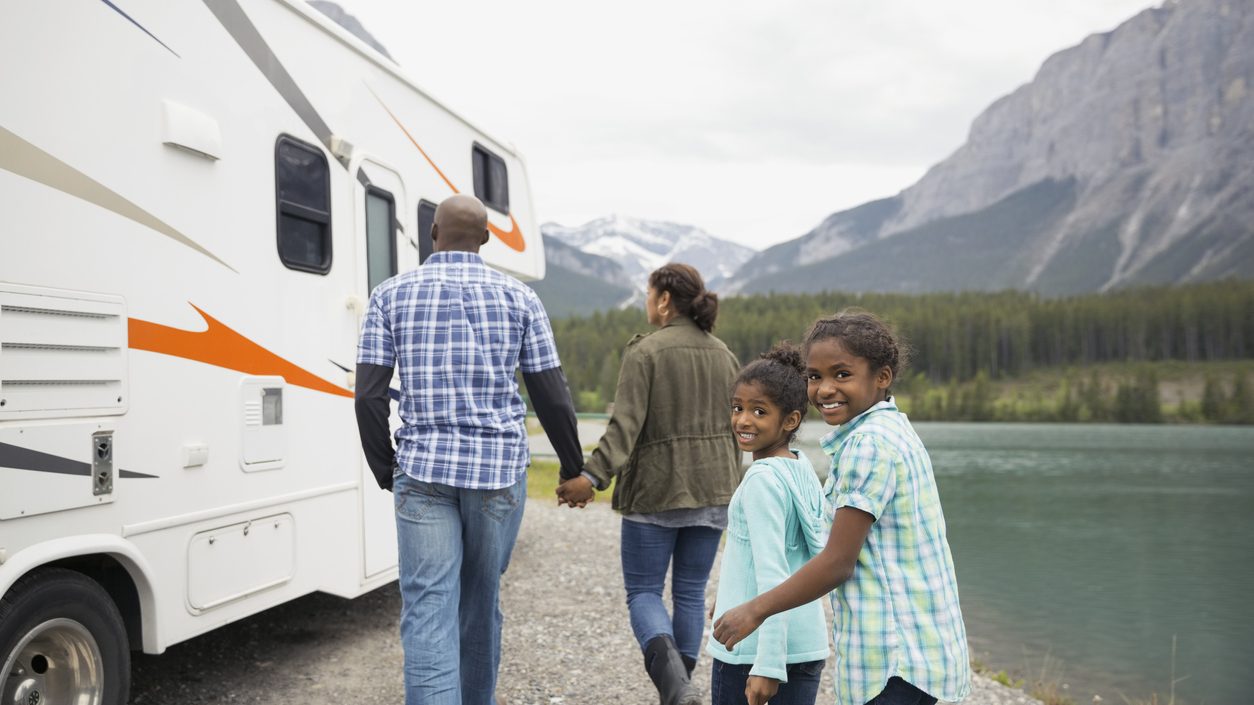
Deciding to trade in your RV is a difficult decision, especially if it’s taken you on some epic adventures. However, as your family grows or your camper needs change, a trade-in sometimes becomes a necessity.
Knowing the conditions that affect your camper’s value and the appraisal process that RV dealers follow empowers you to decide if trading in your RV is the right decision for your family.
Doing a few simple things like yearly maintenance combined with cleaning and repairing your camper before you bring it in to trade will help you get the most value.
At Bish’s RV we accept trade-ins every day. We know you want the most value for your RV when you bring it in for a trade. We want to help you get all you can for your trade.
If you have any questions about trading in your RV, give us a call. We’re always more than happy to tell you what we know.
So now that you know how to get the most value for your trade, start doing your research, get your RV cleaned up and when you’re ready, bring it in for a trade.
If you’re not sure if you’re ready to trade in your RV and you would like to learn more about RV Values, Check out these 2 Articles:
How Much Does an RV Cost in 2023?
Do you still have questions about trading in your Camper? Talk to one of our Expert Outfitters and get all your questions answered.
Are you thinking it’s time to trade in your camper but not sure what RV is right for you? Start Shopping today and find your perfect match!

Greg Long
Bish’s RV Content Manager
Amateur adventurer; professional dreamer.
aka: The Bish-Blog-Guy
